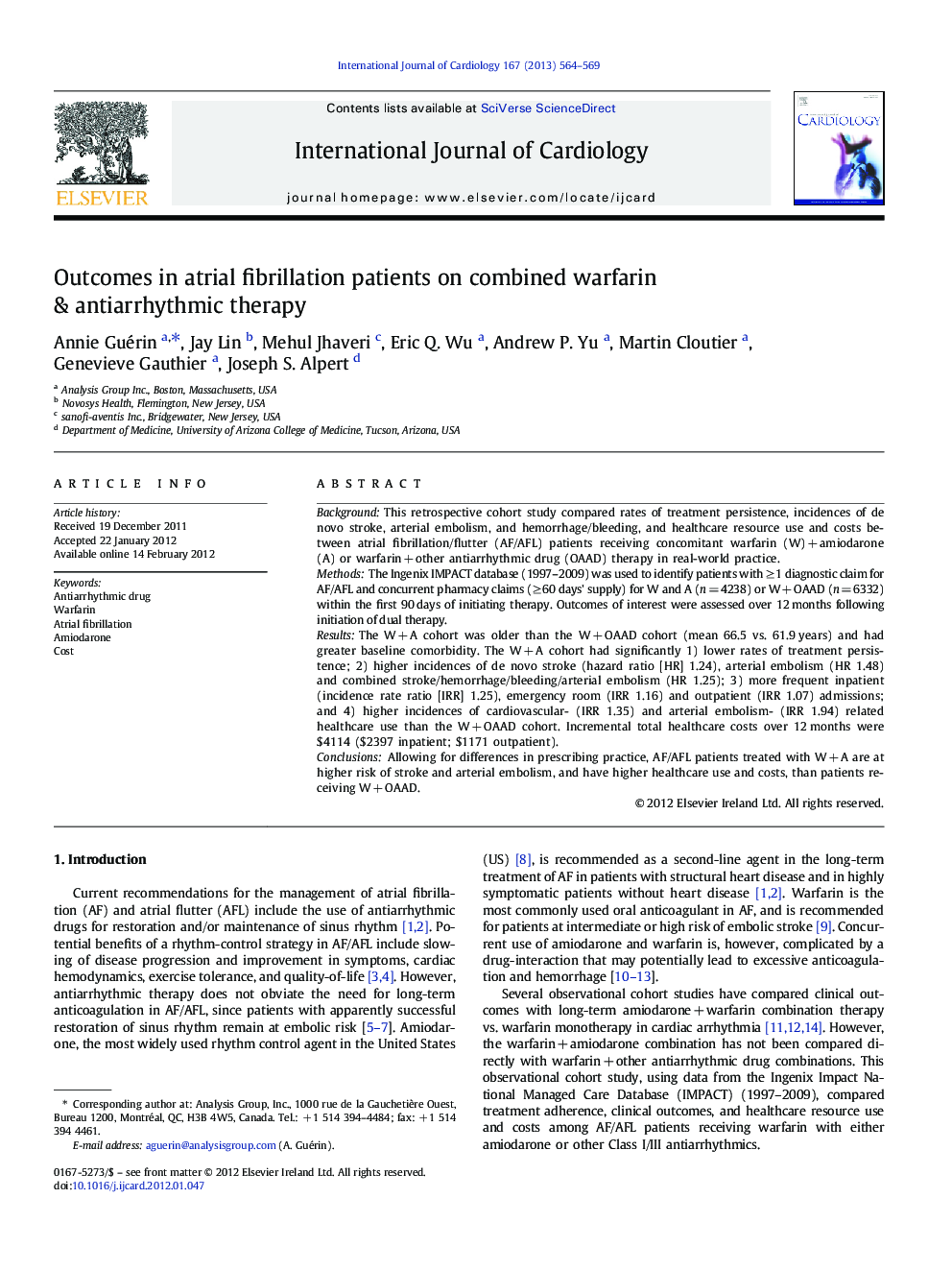| Article ID | Journal | Published Year | Pages | File Type |
|---|---|---|---|---|
| 5975357 | International Journal of Cardiology | 2013 | 6 Pages |
BackgroundThis retrospective cohort study compared rates of treatment persistence, incidences of de novo stroke, arterial embolism, and hemorrhage/bleeding, and healthcare resource use and costs between atrial fibrillation/flutter (AF/AFL) patients receiving concomitant warfarin (W) + amiodarone (A) or warfarin + other antiarrhythmic drug (OAAD) therapy in real-world practice.MethodsThe Ingenix IMPACT database (1997-2009) was used to identify patients with â¥Â 1 diagnostic claim for AF/AFL and concurrent pharmacy claims (â¥Â 60 days' supply) for W and A (n = 4238) or W + OAAD (n = 6332) within the first 90 days of initiating therapy. Outcomes of interest were assessed over 12 months following initiation of dual therapy.ResultsThe W + A cohort was older than the W + OAAD cohort (mean 66.5 vs. 61.9 years) and had greater baseline comorbidity. The W + A cohort had significantly 1) lower rates of treatment persistence; 2) higher incidences of de novo stroke (hazard ratio [HR] 1.24), arterial embolism (HR 1.48) and combined stroke/hemorrhage/bleeding/arterial embolism (HR 1.25); 3) more frequent inpatient (incidence rate ratio [IRR] 1.25), emergency room (IRR 1.16) and outpatient (IRR 1.07) admissions; and 4) higher incidences of cardiovascular- (IRR 1.35) and arterial embolism- (IRR 1.94) related healthcare use than the W + OAAD cohort. Incremental total healthcare costs over 12 months were $4114 ($2397 inpatient; $1171 outpatient).ConclusionsAllowing for differences in prescribing practice, AF/AFL patients treated with W + A are at higher risk of stroke and arterial embolism, and have higher healthcare use and costs, than patients receiving W + OAAD.
